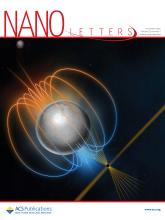A team effort between Professors Daniel Gamelin and David Masiello at the UW and Professor Jon Camden at the University of Notre Dame have developed a new electron microscopy technique to measure the frequency-dependent dielectric function (also known as the refractive index) of individual nanocrystals, paving the way for ellipsometry measurements on materials that cannot be prepared in bulk form or as thin films. Spectroscopic ellipsometry using light is the standard method of determining a material's dielectric response, but is fundamentally limited by the optical diffraction limit on the order of 100 nm. Material heterogeneity below this length scale, therefore, would be averaged, making the measurement of individual nanoscale material responses unobtainable. In their make-measure-model collaboration, Gamelin, Masiello, and Camden have sidestepped this challenge by using the focused electron beam in a scanning transmission electron microscope to perform nano-ellipsometry with approximately 1 nm spatial resolution. The technique relies upon inverting the broadband electron energy-loss spectrum to extract the underlying dielectric function with nanoscale precision. As a first test of their method, the team studied individual ~20 nm diameter colloidal indium tin oxide nanocrystals as a function of tin doping concentration from 1−10 atomic percent. The controlled doping of tin introduces free carriers and an associated tunable metallic character that was clearly imprinted upon the unique dielectric function response of each nanocrystal. While originally applied to indium tin oxide, electron beam nano-ellipsometry provides a new strategy of general utility to extract key materials properties normally obtained from ellipsometry measurements but on materials that cannot be prepared in bulk form or as thin films. The team's work was featured on the November 2020 cover of Nano Letters with more details in Nano Letters 2020, 20, 11, 7987-7994.
